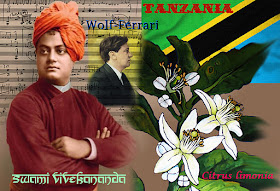“Remember, Ginger Rogers did everything Fred Astaire did, but she did it backwards and in high heels.” - Faith Whittlesey Ginger is the rhizome of the plant Zingiber officinale, which consumed as a culinary delicacy, used as medicine, or functions as a spice. It is the type plat of the ginger family Zingiberaceae. Other related plants in this family are turmeric, cardamom, and galangal. Ginger cultivation began in South Asia and has since spread to East Africa, Caribbean and Australia. It is sometimes called ginger root to distinguish it from other things that share the name ginger.
Ginger is a perennial plant with white and yellowish-greenish flowers, as well as its thick and long twisting rhizoid (underground stem). It is this rhizoid that is the most useful part of the plant as it has a concentrated, spicy aroma, which can be attributed to the fact that it is composed of up to 3% natural essential oils. The rhizoid is widely available for eating and for the use of flavouring foods. It is also ground up and processed into all sorts of powders, tinctures, crystals, tonics and flavourings. Crystallised ginger either sugar coated or dark chocolate encased is a firm favourite amongst confectioneries.
As well as its culinary uses, ginger has long been used in traditional medicine in the countries of origin. Modern medicine is now finding scientific evidence confirming many of the health benefits of ginger (see:
http://www.umm.edu/altmed/articles/ginger-000246.htm). Some of these are listed below:
• Ginger has carminative, antispasmodic properties and can be used to calm an upset stomach, providing relief for the feeling of bloating and expulsion of gas in the gastrointestinal tract.
• Eating ginger helps stimulate the mucus secretion, relieving coughs and soothing any throat irritation.
• Due to its promotion of mucus secretion, ginger protects against the development of ulcers, in the lining of the stomach.
• Multiple studies have shown the efficacy of ginger in relieving feelings of nausea, as seen in seasickness, morning sickness, motion sickness and as a side effect of chemotherapy.
• Ginger has antiviral, antibacterial, and antifungal properties, and can be a useful adjunct in the treatment of all sorts of infections.
• The rhizome contains components that have antihistaminic properties, hence ginger can be used effectively in the treatment of allergies.
• Ginger has anti-inflammatory properties and can be used adjunctively in rheumatoid arthritis, osteoarthritis, and various musculoskeletal disorders. The chemical components of the root are instrumental in inhibiting the biosynthesis of prostaglandins, which are responsible for causing inflammation. Thus the root has proven to be a highly effective form of treatment, in some cases, even more so than the NSAID's that are traditionally prescribed.
• Ginger contains special enzymes responsible for breaking down proteins in food, thus aiding digestion and preventing gastrointestinal cramps. The ancient Greeks used to eat ginger after a large meal in order to ease the digestive process.
• Ginger is often used to settle an upset stomach or treat stomach ailments such as dyspepsia or colic. It is frequently used today in developing countries to treat diarrhoea.
• Ginger has proven to help lower cholesterol levels in the blood and prevents the formation of blood clots.
Ginger is on the FDA's “generally recognised as safe” list, although it does interact with some medications, for example warfarin. Ginger is contraindicated in people suffering from gallstones, as it promotes the production of bile. An acute overdose of ginger is usually in excess of about 2 grams of ginger per kilogram of body mass, dependent on level of ginger tolerance, and can result in a state of central nervous system over-stimulation called ginger intoxication or colloquially the “ginger jitters”.
Allergic reactions to ginger generally result in a rash, and although generally recognised as safe, ginger can cause heartburn, bloating, gas, belching and nausea, particularly if taken in powdered form. Unchewed fresh ginger may result in intestinal blockage, and individuals who have had ulcers, inflammatory bowel disease or blocked intestines may react badly to large quantities of fresh ginger. There are also suggestions that ginger may affect blood pressure, clotting, and heart rhythms.
Besides all of these health benefits, ginger tastes terrific as well and its zing and zest can liven up not only Asian foods, but it also has proven itself invaluable in the Western kitchen! Its use in Christmas cooking has a tradition of centuries and where would we be without ginger beer, dry ginger ale and gingerbread?
Ginger, Date and Banana Cake
Ingredients
125g butter, chopped
1 cup (150g) pitted dates, roughly chopped
3/4 cup white sugar
1/2 tsp ground mace
1/4 tsp ground cloves
125g (3/4 cup) crystallised ginger, chopped
1 teaspoon bicarbonate of soda
1 egg, lightly beaten
1 very ripe banana, mashed well
2 cups self-raising flour
Method
Preheat oven to 180°C. Grease and line base and sides of a 7cm deep, 18cm (base) square cake pan.
Place butter, dates, sugar, ginger, 1 cup water and 1/4 teaspoon salt in a saucepan over medium-high heat.
Bring to the boil. Reduce heat to low and simmer for 2 minutes.
Remove from heat. Stir in bicarbonate of soda and allow mixture to foam.
Transfer mixture to a bowl. Set aside for 10 to 15 minutes to cool slightly.
Add spices, beaten egg and mashed banana to date mixture and mix well. Sift flour over mixture and stir gently to combine. Spoon into pan.
Bake for 40 to 45 minutes or until a skewer inserted into the centre comes out clean. Stand in pan for 10 minutes before turning out onto a wire rack to cool completely.
Cut into squares and serve garnished with double cream (optional).






